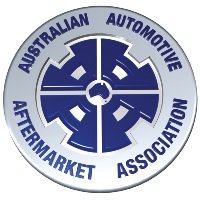
|

| News | |
04/09/2007 - AFTERMARKET 2007 SURVEY

Causeway Consulting has recently completed a survey of Australia's automotive aftermarket on behalf of the Australian Automotive Aftermarket Association. Aftermarket 2007 was the AAAA's second detailed survey of Australia's automotive aftermarket. The survey discovered that there is a greater proportion of retailers (up from 15 per cent of the industry at the end of 2004 to 24 per cent at the beginning of 2007) and Manufacturer/Distributors (up from 13 per cent to 21 per cent). There is a lower proportion of Manufacturers (down from 25 per cent to 14 per cent) and Distributors (down from 25 per cent to 18 per cent). Meanwhile, local manufacturers are looking to 'best cost' options, which often means out-sourcing off-shore. Aftermarket 2007 revealed that 53 per cent of aftermarket product was sourced from local suppliers - manufacturers, wholesalers and distributors - and 47 per cent was imported. In 2004 the ratio was 64 per cent local, and 34 per cent imported. A manufacturer described long-established Australian aftermarket manufacturers as 'brand custodians'. He believes the number of domestic aftermarket manufacturers has decreased as they transform themselves into importers/wholesalers. Those that have made this transformation are 'brand custodians', trading on the reputation of a brand that was established while the business was manufacturing in Australia. Now they are sourcing manufactured product off-shore, while maintaining the quality of product through a design and product engineering capability in Australia. Aftermarket 2007 sought to find out what products will provide growth opportunities for the aftermarket. Oils and lubricants was a product category that was well ranked as a growth area. Almost 71 per cent of survey respondents carrying them expected sales of oils and lubricants to increase in 2007, emulating a 2006 performance where 64 per cent increased sales of these products. At the end of 2004 about 50 per cent of respondents expected sales of oils to increase in the three years from 2005 to 2008. Oils and lubricants are revitalised products. Revitalisation results from innovation in response to technological change, a need to differentiate, adapt or update a product or from marketing activities. Engine technology required a change in oil technology, which engendered a marketing push by oil manufacturers, which resulted in increased aftermarket sales of oils and lubricants. Another positive of the survey was the optimism of those involved in the industry. Aftermarket 2007 revealed that two thirds of the aftermarket increased sales in 2006, and 80 per cent expected sales to further increase in 2007, despite petrol price volatility and the threat of increased interest rates. The aftermarket's core skill is to look at what a motor vehicle is used for and find ways to make that use more pleasurable, productive or functional. Those that want to thrive in the aftermarket will have to use that core skill in a market that will be polarised between two groups. The first will use their aftermarket reputation and capability to exploit a niche, such as performance parts; the second will use their aftermarket reputation and capability to provide customers with depth of product range and accessibility. This is a truncated version of an article in the September edition of Australian Automotive Aftermarket magazine.
|


